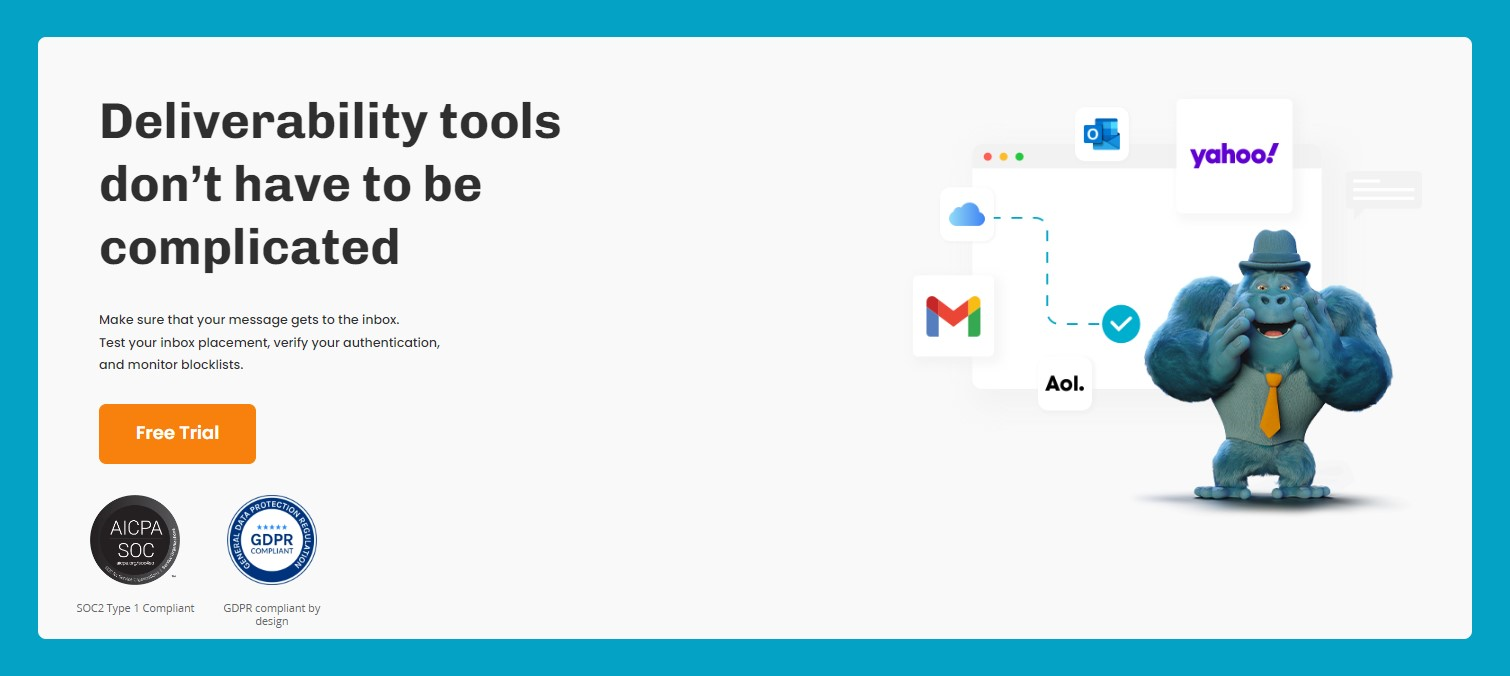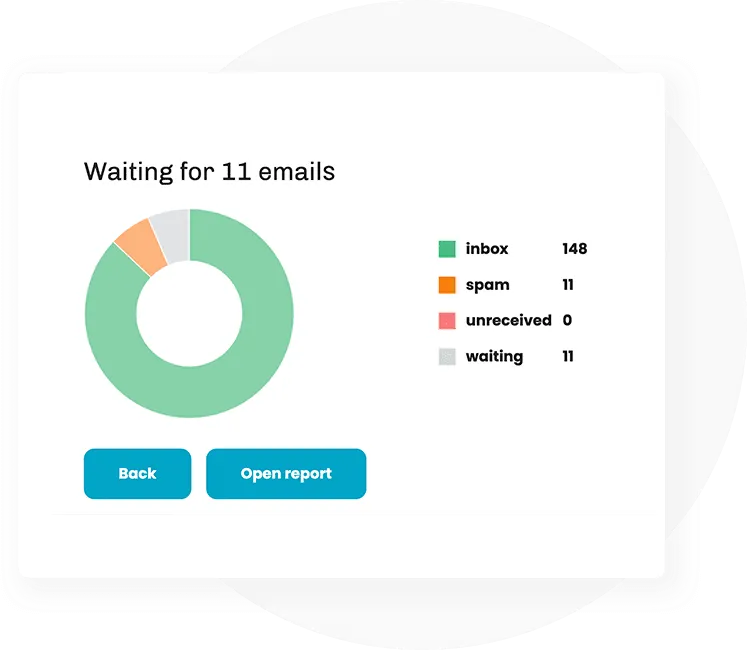Have you ever found yourself sending an email full of errors, despite the fact that you checked them carefully? Or maybe you want to prevent such a scenario and are looking for a solution.
In both cases, you might be interested in seed lists
These lists are an effective way to improve the quality of the messages you send. Find out what they are, why they are helpful, how to build them, and much more!
What is an email seed list?
A seed list is a small group of special email addresses you send your campaigns to first. Before your campaign goes out to your entire email list, you send it out to a seed list first. This way, you can see if there are any potential issues and save yourself from the embarrassment of sending a poorly formatted email to thousands of potential customers.
Example:
Your seed list for an email marketing campaign includes your friends and family members’ email addresses on platforms like Gmail, Yahoo Mail, and Hotmail. You send them a test email before your actual email campaign. You check if content displays correctly on different devices and different browsers.
Results:
✅ If all the links work, images load quickly, the text appears correctly, and everything is as it should be, you can send your campaign to your entire email list.
❎ If any element of your message doesn’t look right, there were errors, or some parts don’t display, you adjust the content, resend it, and evaluate it until you get the intended results.

Why you need to create a seed list
You can probably already see that having such a list is useful for all types of campaigns, but let’s make this clear once and for all.
To improve email deliverability
Utilizing a seed list of email addresses is instrumental in enhancing email deliverability because it helps your messages reach your intended recipients’ inboxes rather than getting caught by spam filters and landing in the spam folder. Why? Because this preliminary testing phase helps you get rid of any problems that might hinder deliverability. Most email marketing tools have this feature, but using a seed list with external contacts is cheaper and faster.
By creating and sending your emails to a seed list, you’re essentially giving your campaigns a first run before the main event and can fine-tune your content.
⭐ As a result, you can achieve the highest deliverability rates and reach your subscribers effectively.
To monitor email campaign performance
Seed lists are also indispensable for closely monitoring the performance of your campaigns. Thanks to sending your messages to this select group, you can gauge how they fare with different clients and inbox providers.
Monitoring metrics such as open rates, click-through rates, and responses from this test group offer valuable data on the effectiveness of your campaign. It allows you to make adjustments and optimize your content before the campaign reaches your entire list of subscribers.
⭐ Such an approach ensures that your campaign is on the right track from the outset.
To identify issues and improvements
Creating a seed list is similar to a meticulous quality control process. It helps you identify any issues or discrepancies in your marketing emails.
From problems like broken links, incorrect formatting, or email authentication errors, this list acts as an initial checkpoint to catch issues before they reach a broader audience. So, it’s a way to check if your messages are free from errors and guarantee your subscribers receive them polished and professional.
⭐ This early detection and troubleshooting process contributes to smoother and more effective email campaigns.
To ensure emails look good across different platforms
Another primary objective of a seed list is to make sure that your emails look consistently good across various devices. If you use different email providers in your seed list, you can test how your message appears and functions in different inboxes.
Such a move is especially important given the diversity of platforms, ranging from web-based services like Gmail to desktop applications such as Outlook.
⭐ A well-structured seed list allows you to evaluate and optimize your email’s display and functionality, so you can maintain their visual and functional integrity.
How to create seed lists
Now that you know that seed lists look promising, you may want to build them. But how?
First, select people who really want to give feedback. You shouldn’t include those who are not reliable in giving reviews and will quickly get bored with the task. That’s why it is best to include teammates and friends, who can provide constructive opinions.
Also, bet on a diverse set of email addresses that represent different email clients, inbox services, and devices. Include addresses from both free and business-oriented mailbox vendors – this diversity allows you to gauge inbox placement accurately.
The number of email addresses on a seed list can vary depending on your needs. In general, it’s advisable to have about 10 addresses.
You can also use a list of extra emails you created yourself – but that’s not always effective because you have just one set of eyes doing all the checking.
And, of course, maintain and update the seed list. Email clients, providers, and platforms change over time – new ones emerge while others lose popularity. But if you regularly review and update your seed list, you will ensure it remains relevant.
In short:
- Choose only people who want to give feedback.
- Include popular platforms and mobile email apps.
- Consider testing on various web browsers.
- Keep track of your lists.
Best practices for using seed lists
Take a look at the following three best practices to get the most out of your new seed lists.
💡 Test, test, test
Don’t be afraid to test the email several times. After all, the point is to carefully create a message that will work out. Also, compare test results from both new and old emails to stay informed about ongoing changes in client behavior.
💡 Analyze data
Collect and analyze data from your seed list tests. Look for patterns and trends. Regularly review this information to uncover insights into how your emails are treated by providers and to make the right adjustments.
💡 Listen to the audience
So you finally got valuable feedback? Then don’t forget to use those insights in the future because, after all, you’re collecting them for a reason, right? Listen to your audience, make improvements based on gained information, and don’t repeat old mistakes.
Bonus: use Bouncer to improve your email marketing results
You may think, ‘Okay, but how Bouncer can help me with my seed lists?’
Well, it can.
Just utilize our tool to do a seed list test. Use your seed list and run it through Bouncer’s Deliverability Kit.

You simply need to:
- decide which email providers you want to check,
- send emails, and our Deliverability Kit will start analyzing them to deliver valuable insights,
- after that, you will see your inbox placement results.

Bouncer plays a crucial role in improving email deliverability and ensuring your emails reach the audience.
We also offer Email Verification Services that check for syntax errors, domain validity, and potential spam traps. By verifying your email list with Bouncer, you are confident you send messages only to valid, deliverable addresses, reduce bounce rates, and preserve your sender reputation.
Contact us to find out how we can make email marketing more effective for your business!
Make email the star of your marketing show
A well-crafted seed list is a fundamental component of successful email marketing – it guarantees your messages are deliverable, effective, and error-free. By carefully testing and monitoring your campaigns through your seed list, you can reach intended inboxes and perform really well.
Get help from Bouncer if you want to improve your email deliverability and you don’t know where to start. Work with us, and you will satisfy your clients like never before.


